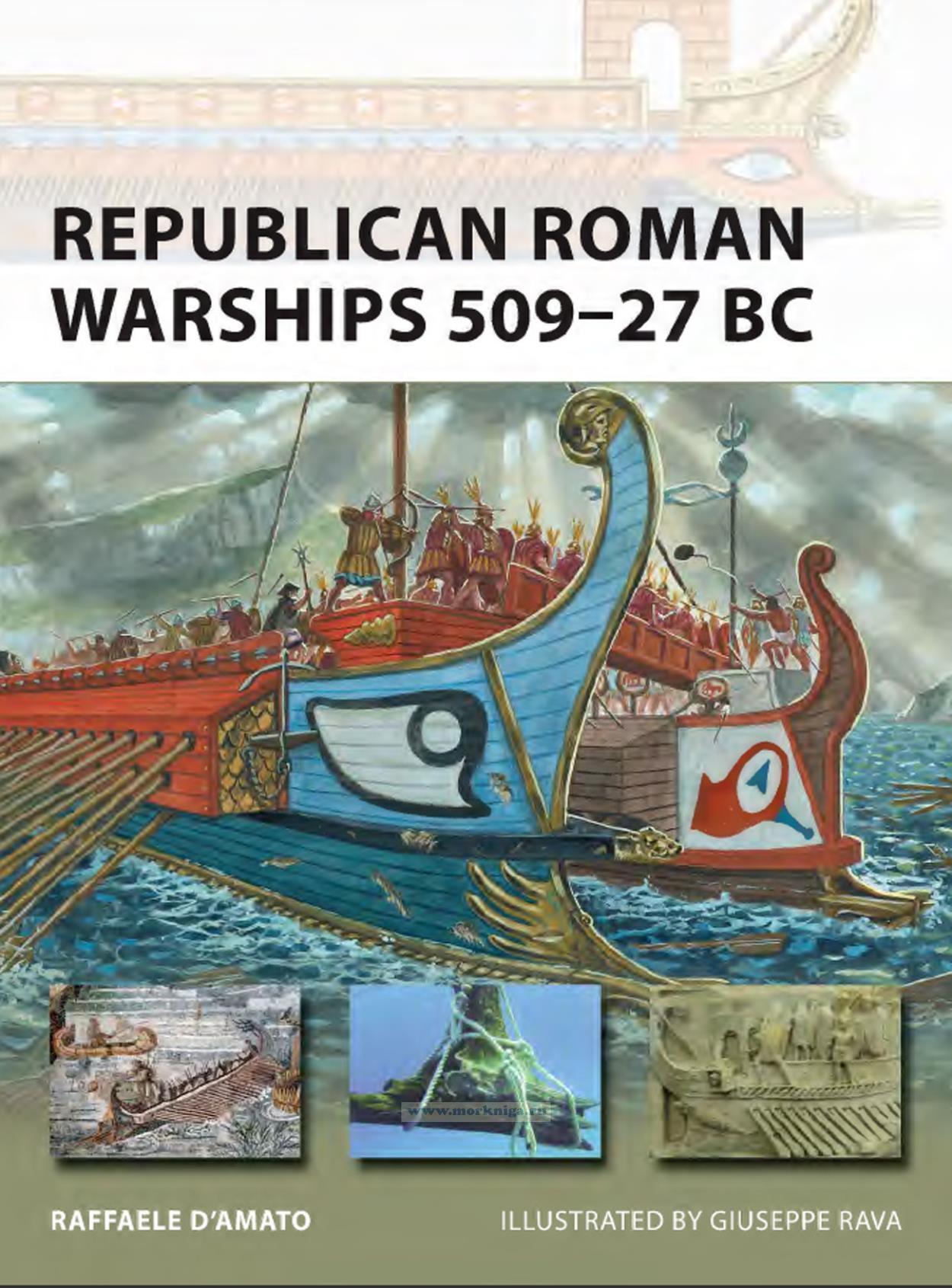Сб с 10 до 16
Republican Roman warships 509-27 bc/Боевые корабли Римской республики 509-27 до н. э.
Книга на английском языке
Republican Rome’s navy originated from the clash of the 3rd century BC Mediterranean superpowers, when Carthage was the master of the western Mediterranean at sea, and the young Roman Res Publica had already conquered the Italian Peninsula. On the sea Carthage seemed invincible, and at the beginning of the First Punic War the Roman fleet was mostly only provided with small undecked units, called aphracktai, of Etruscan typology. The Romans at first copied and then surpassed the better technology of their Carthaginian enemies, using innovative military technology and tactics such as the corvus, or "raven". The Romans’ admirable capacity for organization, combined with their practical common sense, more than made up for their deficiencies in naval warfare and tactics and allowed them to destroy Carthaginian maritime power forever, thus opening the way for Rome’s relentless rise and her dominance of the Mediterranean basin for the next seven centuries.
The legacy of Rome’s naval power is significant. The Roman shipyards developed some of the basilar techniques of modern naval architecture, such as the technique of building from the keel upwards. Numerous generations of sailors coming from the coasts and harbours of Italy were a continuous presence in the Roman fleets in these early centuries of Rome's navy. Rome’s navy assured the continuity of its maritime supplies, and that the republic could control the Mediterranean Sea and push their sails to the borders of the known world, or even beyond. This, the first of a series of New Vanguard books examining Rome’s warships, covers the period from the birth of Rome’s navy to the beginning of the Imperial period.
См. также Боевые корабли Римской республики 509-27 до н. э. на русском языке
Contents
Introduction
Historical background
The origin of the Roman navy
The first known Roman warships
The second Sea Treaty
The growth of Roman sea power
Roman ships and fleets
Structure and construction
Early Roman warships: undecked aphraktai and other pentеconterae
The trireme
The quadrireme
The quinquereme
The bigger polyremes
The Lembos biremes and the liburnae
The oneraria
Other ships
Decoration and equipment
Colour and decoration
Armament and tactics
The ram
The ‘raven’
Turrets
Fighting on the sea: Roman naval tactics
Rowing a roman warship
Rower disposition
Keeping rhythm
Campaigns
The First Punic War
The Second Punic War
Operations in Greece
Pompey and the Cicilian Pirates
Caesar in Gaul
The naval wars of Octavianus and Agrippa
Select bibliography
Index

